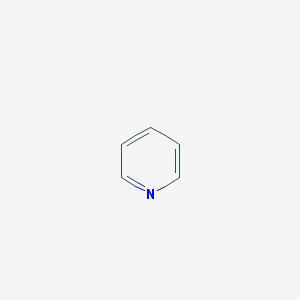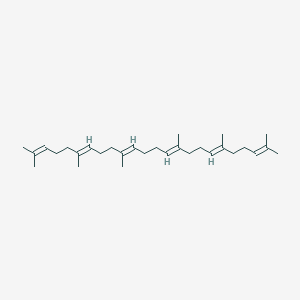-
Categories
-
Pharmaceutical Intermediates
-
Active Pharmaceutical Ingredients
-
Food Additives
- Industrial Coatings
- Agrochemicals
- Dyes and Pigments
- Surfactant
- Flavors and Fragrances
- Chemical Reagents
- Catalyst and Auxiliary
- Natural Products
- Inorganic Chemistry
-
Organic Chemistry
-
Biochemical Engineering
- Analytical Chemistry
- Cosmetic Ingredient
-
Pharmaceutical Intermediates
Promotion
ECHEMI Mall
Wholesale
Weekly Price
Exhibition
News
-
Trade Service
About peptide nucleic acids
Peptide nucleic acid (PNA) is a synthetic polymer
similar to DNA or RNA.
Similar to peptides, various purine and pyrimidine bases are attached to the
backbone via methylene carbonyls.
Since PNA is not negatively charged and there is no electrostatic repulsion between DNA and RNA, the stability and specificity of binding are greatly improved
.
Not easily hydrolyzed by DNases and proteases, PNA is extremely stable
in vivo as well as in vitro.
The main applications of PNA
• Sequence-specific PCR inhibitors (PNA clips) • Telomere, centromere FISH probes, gene-specific probes, infection tests
• Antisense / antimicrobials • miRNA inhibitors
• Duplex DNA invasion and capture
• Microarray probes
Non-labeled PNA
Due to its high affinity and specificity, PNA can effectively bind to target nucleic acids
.
Unlabeled PNA is often used as a specific blocker (PNA clip)
for the PCR reaction of genes.
This technique can effectively detect SNP mutations
in target genes.
PNAs tend to bind to target nucleic acids
in orientation and inverse parallel.
The amino group at the 5' end of PNA (also written as 5' or H-) can bind to other functional groups, and the amide group (also written -NH2 or 3') at the 3' end of PNA is weakly
reactive.
Acetylation at the 5' end prevents it from continuing to react
.
Because the melting temperature of PNA Tm is higher than DNA, in general, the length of most of the PNA used is 10 ~ 21 bases
.
The longer the PNA chain, the worse
the solubility.
High purine content (>60%), especially base G, is responsible for
poor solubility.
According to the sequence, the maximum length of the PNA chain is about 40 bases
.
However, we strongly recommend checking the Tm, and the design probe should have the appropriate length and sequence
.
When PNA chains are long (>22mer) or purine content is high (>60%), in order to improve the solubility of PNA probes, we recommend adding some solvent groups such as O linker, E linker, X linker or two lysine
to the sequence.
When PNA couples peptides or dyes, the linker can act as
a spacer.
• Fittings that may be used
- O linker (also known as AEEA or eg1): commonly used to improve solubility
- Acts as a spatial spacing: O, E, X, C3, C4, C6, C12
- Add sulfhydryl: C6SH, C11SH
Mark PNA
Both the 5' and 3' ends of the PNA chain can be marked
.
Since the 3' end is an inactive group (-CONH2), a lysine is added, and the amino group on its side chain can be used for labeling
.
If marking at the 5' end, we recommend adding 1~2 O linkers
between the PNA and the marker.
Markers: fluorophores (-NHS esters or carboxylamide), biotin, palmitic acid, digoxin, DABCYL, azide, methylene blue, mercaptolyl, etc
.
Peptide nucleic acids - peptides
Because the peptide nucleic acid backbone is based on polyamides linked together, peptide nucleic acids can be easily combined with peptides to increase function
.
For example, the addition of lysine can improve the solubility of peptide nucleic acid; The addition of cysteine allows peptide nucleic acids to be linked to
other molecules by disulfide bonds.
Both ends of the PNA chain can be used to couple peptides, but often at the 5' end (peptide + PNA).
An O linker
that acts as a spatial spacing is added between the peptide and PNA.
One of the most common applications of peptide nucleic acid-polypeptide is as an antimicrobial reagent, which is composed of CPP [the most common (KFF) 3K or (RXR) 4xB] and PNA molecules containing 10 ~ 15 bases, which have an antisense effect
on the genes necessary for microorganisms.
Similarly, in mammalian cells, antisense oligonucleotide methods can be easily established using CPP-PNA (designed PNA for target mRNA antisense
).
Most commonly, PNA is designed in the 5' ATG and upstream areas
.
Another application of peptide-PNA is gene chips, which can capture antigenes and transcription genes
from target microorganisms.
In general, peptide nucleic acid-polypeptide is continuously synthesized on the resin from the C-terminal to the
N-terminus.
Design PNA
PNA oligomers can form double strands in either direction, but the antiparallel direction takes precedence
.
The Tm of PNA/DNA is generally higher
than that of the corresponding DNA/DNA.
Roughly speaking, each base pair can increase by about 1°C
.
Due to the high affinity with complementary DNA sequences, it is usually not necessary to design long strands of PNA
.
The most common PNA contains 12-21 bases
.
It is highly recommended to avoid any self-complementary sequences such as reverse repeats, hairpins, and palindromic sequences, as PNA/PNA interactions are stronger than PNA/DNA
.
It is also recommended to avoid sequences with a high purine content, as they tend to polymerize, resulting in poor
water solubility.
Try to keep the purine content below 60%.
Also try to avoid adjacent purines with more than 6 residues, especially 4 or more G residues in a row
.
To improve the solubility of PNA probes, some solventil groups such as O linker, E linker, X linker, or two lysine
can be added to the sequence.
If you would like to know more, please contact us







